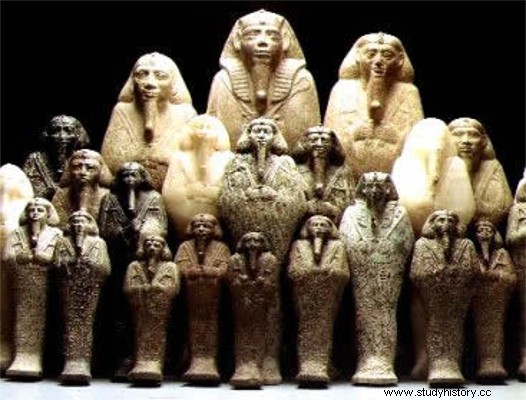
Egypt has been, throughout its history, a target of different processes of unification and invasion. Contrary to what we usually study, these invasions took place during other moments before the domination of the Romans in the 1st century or the European nations in the 19th century. Thus, the crises and hegemonies within the Egyptian civilization is a subject still little explored by historiographical studies.
In the region south of the Nile River, present-day Sudan, an ancient empire was formed in the period when Egypt was experiencing a period of decadence in the Middle Kingdom. Between the 18th and 16th centuries BC, the Nubians carried out the expansion of their borders in the region of the extreme south of the River Nile. Egypt, which relied on exploration of gold mining zones close to the Nubian Empire, felt that the rise of such a powerful neighbor could threaten the integrity of their territories.
Thus, between the 16th and 13th centuries BC, Egypt carried out a process of invasion and dominion over the Nubians. Without adopting a very oppressive policy, the Egyptians brought many of their customs and habits to the Nubian civilization. What seemed to be a clear process of acculturation of the Egyptians over the Nubians, came later to ensure the preservation of important traits of Egyptian civilization. By the end of the 8th century BC, Egypt was politically fragmented and under Libyan control.
In 770 BC, Piye, king of Nubia, undertook a military assault that would politically reunify Egypt. Leaving with troops to the north, the Nubian army reached the Egyptian city of Thebes. Waging battles for nearly a year, Piye became Egypt's first black pharaoh. The rise of black pharaohs in Egypt brought to light the supremacy of an African civilization that questioned the ideas of 19th century thinkers and historians, who considered African peoples synonymous with backwardness.
In the year 715 BC, Piye died, leaving the throne to his brother Shabaka. Rising to power, Shabaka assumed the name of Pharaoh Pepi II. Among his main actions, Pepi II undertook a notorious set of public works. The city of Thebes, capital of Egypt, and the temple of Luxor gained new projects. In Karnak, he ordered the construction of a statue in his honor and tried to build dikes to prevent the flooding of the houses of the populations who lived on the banks of the Nile River.
Concerned with the advance of the Assyrian Empire, which at the time was experiencing the expansion of its domains, the Nubians formed an army that should contain the Assyrian domination over the cities of Eltekeh and Jerusalem. Although there are no clearer details about this battle, reports say that the then Assyrian king Sennacherib retreated his troops, giving victory to the military alliance of the Hebrews and Nubians. According to some historians, thanks to the Nubian military contribution, Jewish civilization enjoyed a long period in which it consolidated its main cultural and religious traditions.
After this episode, there was the consolidation of the reign of Taharqa, son of Piye. Under his rule, military victories guaranteed great stability to the Egyptian territories. In addition, a sequence of generous periods of rain gave tranquility to the entire population controlled by it. Taking advantage of the period of prosperity, Taharqa carried out the expansion of the temple of Amun. On Mount Jebel Barkal, believed to be the birthplace of the god Amun, Taharqa ordered the construction of two temples at the foot of the mountain.
During his rule, the Assyrians once again affronted the Nubian dynasty. Under King Esarhaddon, the Assyrians attempted to obstruct the Egyptian trading post on the shores of Lebanon. Confident in the prosperity of his kingdom and the strength of his armies, Taharqa sent troops tasked with annihilating Assyrian military action. Offering great resistance, the Assyrians won the battle and invaded Egypt in 674 BC. In the following years the Assyrians undertook further victories that threatened the dynasty of the black pharaohs.
The onslaughts of the Assyrian military were establishing the end of Taharqa's reign. Retreating to the south, the last king of the Nubian dynasty was soon forced to leave Egypt. After losing control over Egypt, little is known about King Taharqa's last days. His body was buried in a pyramid in Nuri, on the banks of the River Nile. With the end of this dynasty, Egyptian culture still preserved characteristics from the contact with this African kingdom.
